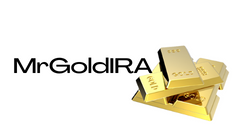Bitcoin has a history of making waves in the financial world, with November 28 standing out as a significant date. Both in 2013 and 2017, Bitcoin reached all-time highs (ATHs) on this date, grabbing the attention of global investors. As we near November 28, 2024, the big question looms: Can Bitcoin replicate its past achievements and surge past the $100,000 mark?
A Glimpse into the Past: November 28, 2013, and 2017
November 28, 2013: Bitcoin made history by crossing the $1,000 threshold for the first time. This milestone marked a rapid rise driven by increasing recognition, adoption, and the buzz surrounding Bitcoin's disruptive capabilities. While Bitcoin was still niche back then, surpassing $1,000 solidified its position as a serious player in the financial realm, akin to a modern-day gold rush.
November 28, 2017: Fast forward four years, and Bitcoin shattered the $10,000 barrier, a significant psychological and market-defining moment. The 2017 surge was fueled by wider adoption, the Initial Coin Offering (ICO) craze, and a growing interest from retail investors. By December, Bitcoin peaked near $20,000, capping off a remarkable year that left a lasting impact on the market.
The Significance of November 28: Unraveling the Historical Context
November 28's importance in Bitcoin's timeline is no random occurrence. This date is closely tied to Bitcoin's four-year halving cycle, where the block reward for miners is halved. The first halving took place on November 28, 2012, triggering a pattern that aligns with Bitcoin's price cycles. Halvings reduce the rate of new Bitcoin supply, increasing scarcity and often sparking bullish price trends in the following years. The 2012 halving set the stage for the 2013 ATH, while the 2016 halving set the scene for the 2017 bull run.
With the most recent halving in April 2024, similar market dynamics are expected to unfold, leading to speculation about another ATH on November 28, 2024.
What Sets 2024 Apart?
Several factors fuel the optimism surrounding a potential ATH on November 28, 2024:
Post-Halving Momentum
Bitcoin traditionally experiences significant price surges in the 12–18 months following a halving. With the April 2024 halving behind us, the anticipated supply shock has started to influence the market. Early signs point to a growing demand, setting the stage for a potential record-breaking rally by year-end.
Increased Institutional Adoption
Since 2017, major institutional players like BlackRock and Fidelity have entered the Bitcoin market. The introduction of spot Bitcoin ETFs has injected billions in new liquidity, potentially driving prices to new highs. In 2024, continued institutional interest and new financial offerings are expected to boost Bitcoin's adoption and value.
Geopolitical and Economic Factors
Amid inflation and economic uncertainties, Bitcoin's appeal as a store of value has grown. Global adoption could further propel its upward trajectory, positioning Bitcoin as a hedge against financial instability. Recent geopolitical tensions and economic policies may also heighten investor interest in Bitcoin as a safe asset.
Presidential Support
The election of a pro-Bitcoin U.S. President, Donald Trump, adds momentum. Trump's administration has shown support for Bitcoin, implementing policies favorable to its adoption. This backing has bolstered Bitcoin's credibility among investors and institutions, fostering an environment conducive to growth.
Corporate Treasury Adoption
In 2024, a notable trend is companies adding Bitcoin to their treasury reserves. Leading firms across sectors are diversifying their assets by including Bitcoin. This move not only enhances corporate financial strategies but also boosts Bitcoin demand, contributing to its price surge. Corporate adoption validates Bitcoin as a long-term investment and store of value.
Market Sentiment
Bitcoin's price thrives on narratives and investor sentiment. The push for $100,000 aligns with the optimism as November 28, 2024, draws near. Social media chatter, technical analysis, and psychological milestones all play a role in building momentum. Community belief in Bitcoin's potential is crucial in driving its value upward.
Considerations and Challenges
Despite the positive indicators, reaching $100,000 by November 28, 2024, is not guaranteed. Challenges include:
– Macroeconomic Uncertainties
– Regulatory Hurdles
– Market Volatility
– Past Performance Not Indicative of Future Results
Will History Repeat Itself?
Bitcoin's cyclical nature, as seen on November 28, offers insight into potential future trends. While hitting a $100,000 ATH would underscore Bitcoin's resilience, the outcome remains uncertain. Whether Bitcoin achieves a new milestone on November 28, 2024, or surpasses it, this date could mark another pivotal moment in the digital currency's history.
What are your thoughts? Will Bitcoin reach a new ATH on November 28, 2024?
Frequently Asked Questions
What tax is gold subject in an IRA
The fair market price of gold when it is sold determines the tax due on its sale. Gold is not subject to tax when it's purchased. It isn't considered income. If you decide to sell it later, there will be a taxable gain if its price rises.
You can use gold as collateral to secure loans. Lenders try to maximize the return on loans that you take against your assets. This often means selling gold. This is not always possible. They might keep it. They may decide to resell it. Either way you will lose potential profit.
You should not lend against your gold if it is intended to be used as collateral. Otherwise, it's better to leave it alone.
How much of your IRA should include precious metals?
You should remember that precious metals are not only for the wealthy. You don't have to be rich to invest in them. There are many ways that you can make money with gold and silver investments, even if you don't have much money.
You might also be interested in buying physical coins, such bullion rounds or bars. You could also buy shares in companies that produce precious metals. Your retirement plan provider may offer an IRA rollingover program.
Regardless of your choice, you'll still benefit from owning precious metals. They offer the potential for long-term, sustainable growth even though they aren’t stocks.
They also tend to appreciate over time, unlike traditional investments. This means that if you decide on selling your investment later, you'll likely get more profit than you would with traditional investing.
What are the pros & cons of a Gold IRA?
An Individual Retirement account (IRA) is a better option than regular savings accounts in that interest earned is exempted from tax. This makes an IRA great for people who want to save money but don't want to pay tax on the interest they earn. There are some disadvantages to this investment.
You could lose all of your accumulated money if you take out too much from your IRA. The IRS may prevent you from taking out your IRA funds until you reach 59 1/2. If you do decide to withdraw funds from your IRA, you'll likely need to pay a penalty fee.
Another disadvantage is that you must pay fees to manage your IRA. Many banks charge between 0.5%-2.0% per year. Other providers charge monthly management charges ranging anywhere from $10 to $50.
If you prefer to keep your money outside a bank, you'll need to purchase insurance. Most insurers require you to own a minimum amount of gold before making a claim. It is possible that you will be required to purchase insurance that covers losses of up to $500,000.
If you decide to open a gold IRA, it is important to know how much you can use. Some providers limit the number of ounces of gold that you can own. Others allow you the freedom to choose your own weight.
It's also important to decide whether or not to buy gold futures contracts. Futures contracts for gold are less expensive than physical gold. Futures contracts, however, allow for greater flexibility in buying gold. They let you set up a contract that has a specific expiration.
You will also have to decide which type of insurance coverage is best for you. The standard policy doesn’t provide theft protection or loss due fire, flood, or earthquake. It does provide coverage for damage from natural disasters, however. You may consider adding additional coverage if you live in an area at high risk.
Additional to your insurance, you will need to consider how much it costs to store your gold. Insurance won't cover storage costs. Banks charge between $25 and $40 per month for safekeeping.
To open a IRA in gold, you will need to first speak with a qualified custodian. A custodian keeps track of your investments and ensures that you comply with federal regulations. Custodians cannot sell your assets. Instead, they must maintain them for as long a time as you request.
Once you have chosen the right type of IRA to suit your needs, it is time to fill out paperwork defining your goals. Your plan should include information about the investments you want to make, such as stocks, bonds, mutual funds, or real estate. You should also specify how much you want to invest each month.
After filling in the forms, please send them to the provider. The company will then review your application and mail you a letter of confirmation.
You should consult a financial planner before opening a Gold IRA. A financial planner is an expert in investing and can help you choose the right type of IRA for you. They can also help you lower your expenses by finding cheaper alternatives to purchasing insurance.
Should you open a Precious Metal IRA
Before opening an IRA, it is important to understand that precious metals aren't covered by insurance. There are no ways to recover the money you lost in an investment. This includes investments that have been damaged by fire, flooding, theft, and so on.
This type of loss can be avoided by investing in physical silver and gold coins. These items are timeless and have a lifetime value. You would probably get more if you sold them today than you paid when they were first created.
You should choose a reputable firm that offers competitive rates. It is also a smart idea to use a third-party trustee who will help you have access to your assets at all times.
Remember that you will not see any returns unless you are retired if you open an Account. Remember the future.
Statistics
- This is a 15% margin that has shown no stable direction of growth but fluctuates seemingly at random. (smartasset.com)
- Contribution limits$6,000 (49 and under) $7,000 (50 and up)$6,000 (49 and under) $7,000 (50 and up)$58,000 or 25% of your annual compensation (whichever is smaller) (lendedu.com)
- Indeed, several financial advisers interviewed for this article suggest you invest 5 to 15 percent of your portfolio in gold, just in case. (aarp.org)
- If you take distributions before hitting 59.5, you'll owe a 10% penalty on the amount withdrawn. (lendedu.com)
- You can only purchase gold bars at least 99.5% purity. (forbes.com)
External Links
irs.gov
investopedia.com
bbb.org
cftc.gov
How To
Investing with gold or stocks
This might make it seem very risky to invest gold as an investment tool. This is because many people believe that gold investment is no longer profitable. This belief comes from the fact most people see gold prices falling due to the global economy. They think that they would lose money if they invested in gold. There are many benefits to investing in gold. We'll be looking at some of these benefits below.
One of the oldest currencies known to man is gold. There are records of its use going back thousands of years. It is a valuable store of value that has been used by many people throughout the world. It is still used as a payment method by South Africa and other countries.
The first point to consider when deciding whether or not you should invest in gold is what price you want to pay per gram. The first thing you should do when considering buying gold bullion is to decide how much you will spend per gram. If you don’t know the current market rate for gold bullion, you can always consult a local jeweler to get their opinion.
It's also important to note that, although gold prices are down in recent months, the costs of producing it have risen. Although the price of gold has dropped, production costs have not.
You should also consider the amount of your intended purchase when considering whether you should buy or not. It is sensible to avoid buying gold if you are only looking to cover the wedding rings. But, if your goal is to make long-term investments in gold, this might be worth considering. Profitable gold can be sold at a lower price than it was when you bought it.
We hope this article has given you an improved understanding of gold investment tools. We recommend you do your research before making any final decisions. Only after you have done this can you make an informed choice.
—————————————————————————————————————————————————————————————-
By: Mark Mason
Title: Will Bitcoin Price Hit $100,000 on November 28, 2024?
Sourced From: bitcoinmagazine.com/markets/will-the-bitcoin-price-repeat-the-november-28-ath-pattern-of-2013-and-2017-in-2024
Published Date: Wed, 27 Nov 2024 20:26:13 GMT




















